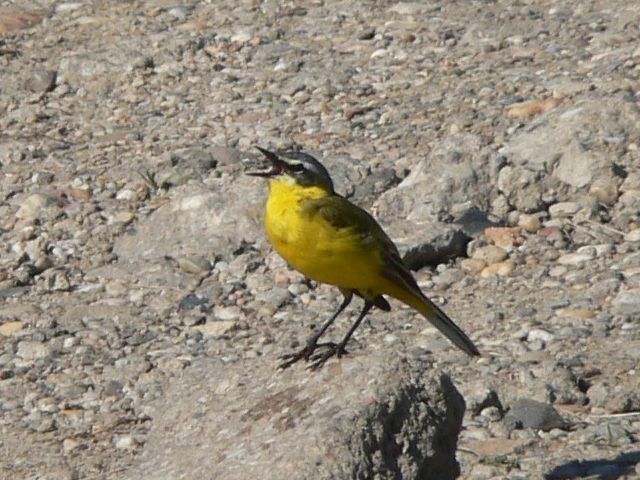| Citation |
BirdLife International 2019. Motacilla flava (amended version of 2018 assessment). The IUCN Red List of Threatened Species 2019: e.T103822349A155602678. https://dx.doi.org/10.2305/IUCN.UK.2019-3.RLTS.T103822349A155602678.en. Downloaded on 29 January 2020. |
Description |
JUSTIFICATION
This species has an extremely large range, and hence does not approach the thresholds for Vulnerable under the range size criterion (extent of occurrence <20,000 km2 combined with a declining or fluctuating range size, habitat extent/quality, or population size and a small number of locations or severe fragmentation). Despite the fact that the population trend appears to be decreasing, the decline is not believed to be sufficiently rapid to approach the thresholds for Vulnerable under the population trend criterion (>30% decline over ten years or three generations). The population size is extremely large, and hence does not approach the thresholds for Vulnerable under the population size criterion (<10,000 mature individuals with a continuing decline estimated to be >10% in ten years or three generations, or with a specified population structure). For these reasons the species is evaluated as Least Concern.
RANGE DESCRIPTION
Motacilla flava has an extremely large range, extending from Europe, east through Siberia to west Asia and northwestern China; and south through the Arabian Peninsula to Egypt.
DESCRIPTION
In Europe, the breeding population is estimated to number 9,630,000-16,000,000 pairs, which equates to 19,300,000-32,100,000 mature individuals (BirdLife International 2015). Europe forms c.30% of the global range, so a very preliminary estimate of the global population size is 64,000,000-107,000,000 mature individuals, although further validation of this estimate is needed.
Trend Justification: In Europe, trends between 1980 and 2013 show that populations have undergone a moderate decline (p<0.01) (EBCC 2015).
HABITAT AND ECOLOGY
This species occupies a range of damp or wet habitats with low vegetation, from damp meadows, marshes, waterside pastures, sewage farms and bogs to damp steppe and grassy tundra. In the north of its range it is also found in large forest clearings. It breeds from April to August, although this varies with latitude. The nest is a grass cup lined with hair and placed on or close to the ground in a shallow scrape. Normally it lays four to six eggs. It feeds on a wide variety of terrestrial and aquatic invertebrates as well as some plant material, particularly seeds. The species is almost wholly migratory with European populations wintering in sub-Saharan Africa, central and eastern populations mainly migrate to South Asia with some moving to Africa. The species is resident in Egypt (Tyler and Christie 2016).
THREATS
Declines in some countries have been linked to agricultural intensification, especially wetland drainage and the replacement of grasslands with cereals. In addition the use of pesticides and the dumping of manure may also be a threat (Tyler and Christie 2016). Populations breeding in southern Europe are likely to be adversely affected by degradation of the Sahel (Wood 1992). In the African wintering grounds it may be vulnerable to chemical spraying of Red-billed Quelea (Quelea quelea) roosts in trees or reedbeds where wagtails also roost (Tyler and Christie 2016). |


